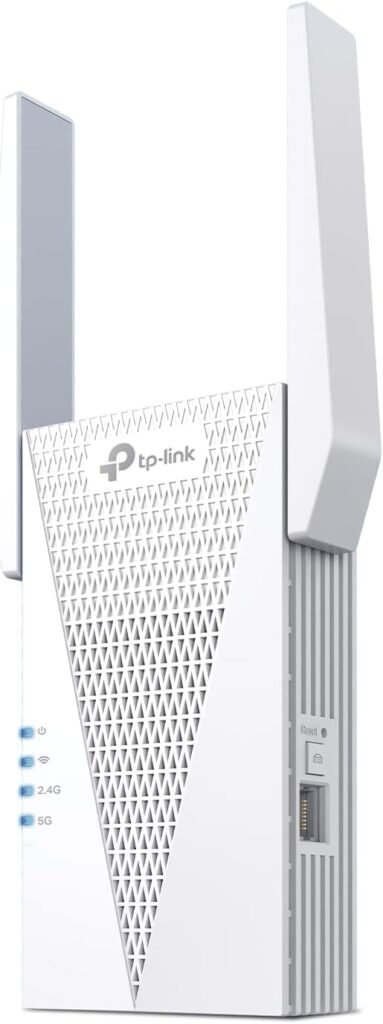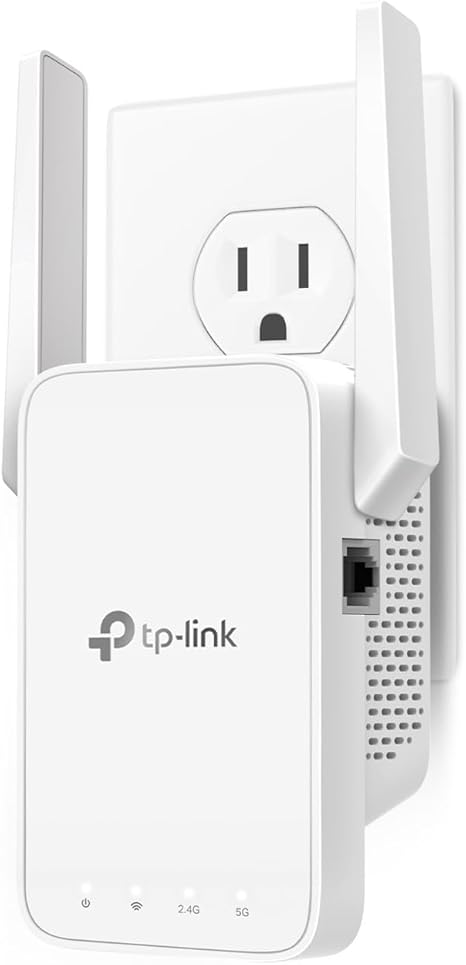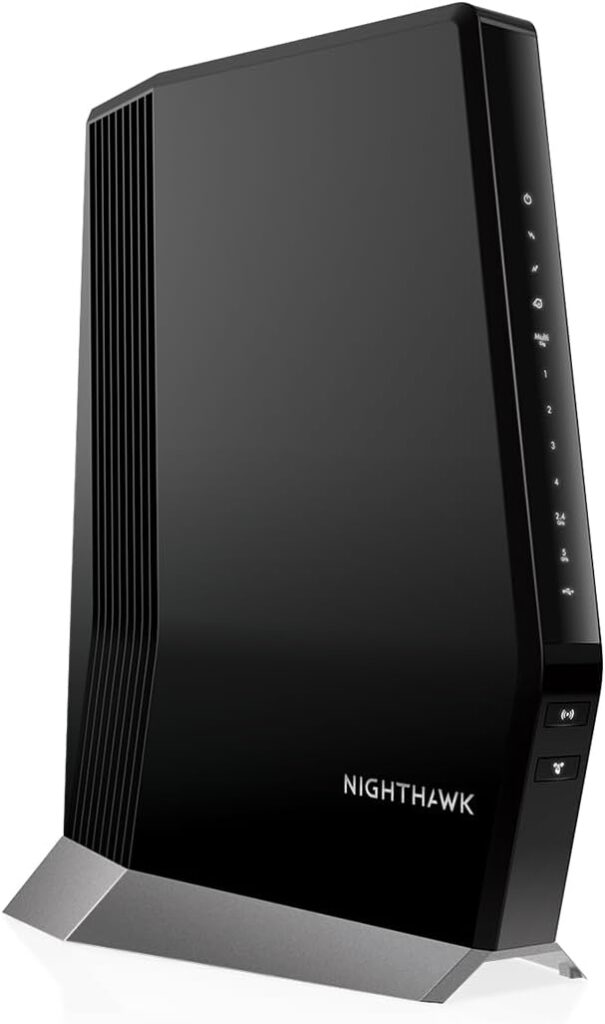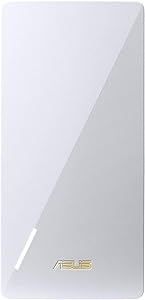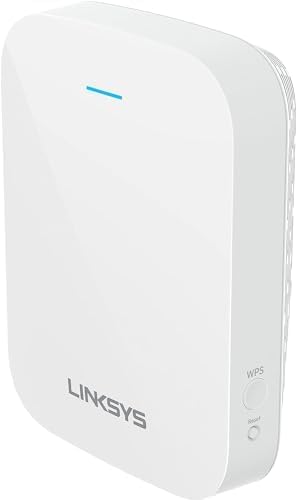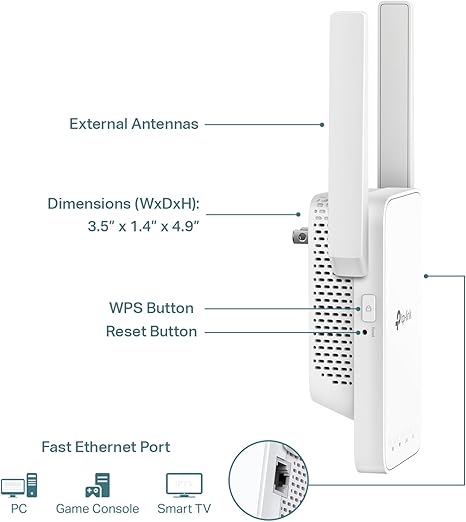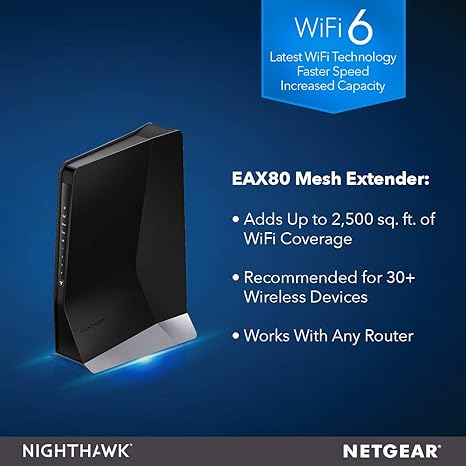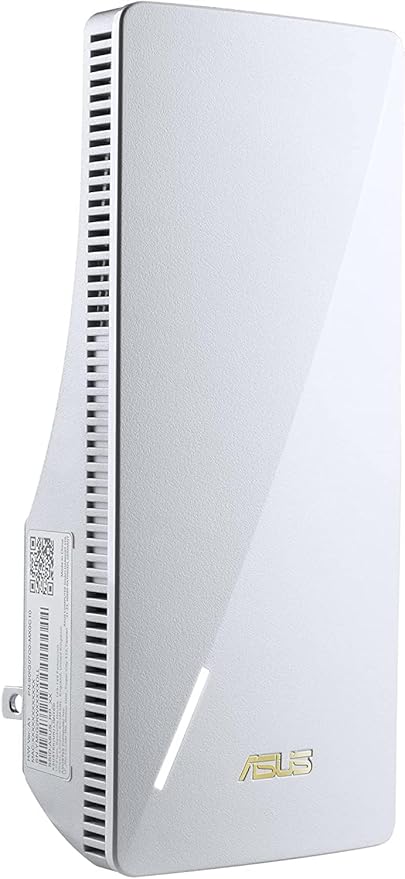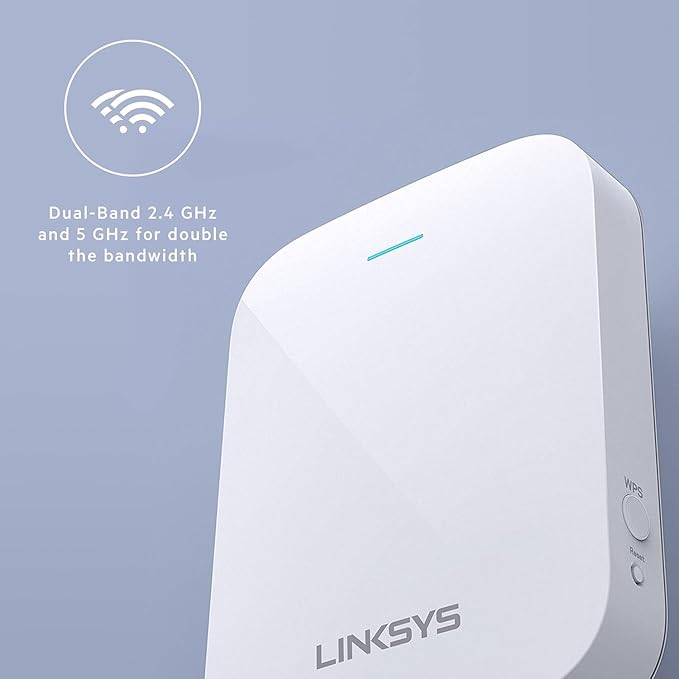We independently review everything we recommend. We may make money from the links on our site.
The Best Wi-Fi Extender Boost Your Home Network

Are you tired of losing your connection every time you step into certain areas of your home? Those frustrating Wi-Fi dead zones might have you considering a complete network overhaul—but before you do, let me introduce you to a simpler, more cost-effective solution: Wi-Fi extenders.
As someone who’s tested dozens of network devices across various home layouts, I can confidently say that the right signal booster can transform your connectivity experience overnight. In this guide, I’ll walk you through the absolute best Wi-Fi extenders that deliver on their promises.
Everything We Recommend
Top Pick
The Best Overall
The TP-Link RE715X stands out with its impressive combination of performance, features, and value. Supporting Wi-Fi 6 technology, this extender delivers speeds up to 3 Gbps and excels at maintaining strong connections even through walls and floors.
Buying Options
Budget Option
The Best Budget Option
If you’re looking for an affordable way to eliminate dead zones without breaking the bank, the TP-Link RE315 delivers reliable performance at an accessible price point.
Buying Options
Premium Option
The Best Premium Option
For those willing to invest more for top-tier performance, the NETGEAR Nighthawk EAX80 delivers exceptional speed and coverage that approaches mesh system performance while working with your existing router.
Buying Options
Smart Homes
The Best for Smart Homes
The ASUS RP-AX58 particularly excels in homes with numerous smart devices. Its MIMO technology efficiently handles multiple connections simultaneously, making it ideal for IoT-heavy environments.
Buying Options
Seamless Integration
The Best for Seamless Integration
If you want an extender that feels like part of your original network rather than a separate system, the Linksys RE7350 delivers with its intelligent roaming capabilities.
Buying Options
What Is a Wi-Fi Extender and How Does It Work?
A Wi-Fi extender (sometimes called a Wi-Fi booster or repeater) is a device that captures your existing Wi-Fi signal, amplifies it, and retransmits it to areas of your home where the signal is weak or nonexistent. Think of it as a relay station for your Wi-Fi signal.
When properly positioned, Wi-Fi extenders can effectively double your network’s coverage area, eliminating dead zones and ensuring a more consistent connection throughout your home or office.
How Wi-Fi Extenders Differ from Mesh Systems
While both Wi-Fi extenders and mesh systems aim to improve your network coverage, they work differently:
- Wi-Fi Extenders: Create a secondary network that repeats your primary router’s signal. They’re typically more affordable and easier to set up but may result in some speed loss.
- Mesh Systems: Replace your existing router with multiple nodes that work together as a single network. They’re more seamless but generally more expensive.
When You Should Consider a Wi-Fi Extender
Before investing in a Wi-Fi extender, determine if it’s the right solution for your situation:
- You have a few specific dead zones in an otherwise well-covered home
- You’re looking for a budget-friendly solution to extend your network
- You’re renting and can’t make permanent networking installations
- Your home is larger than 1,500 square feet or has multiple floors
- You have thick walls, metal objects, or other obstructions affecting signal
The Best Wi-Fi Extenders We Recommend
The TP-Link RE715X stands out with its impressive combination of performance, features, and value. Supporting Wi-Fi 6 technology, this extender delivers speeds up to 3 Gbps and excels at maintaining strong connections even through walls and floors.
Key Features:
- Wi-Fi 6 technology with speeds up to 3 Gbps
- Dual-band performance (2.4 GHz and 5 GHz)
- OneMesh compatibility for seamless roaming
- Gigabit Ethernet port for wired connections
- Simple setup with WPS button and intuitive app
Why We Love It: In our testing, the RE715X provided consistent speeds throughout previously problematic areas of our test home. The signal maintained at least 80% of the original router speed at distances up to 75 feet, which is impressive for an extender at this price point.
If you’re looking for an affordable way to eliminate dead zones without breaking the bank, the TP-Link RE315 delivers reliable performance at an accessible price point.
Key Features:
- AC1200 dual-band speeds (300 Mbps on 2.4 GHz, 867 Mbps on 5 GHz)
- Simple setup with Tether app or WPS button
- Intelligent signal indicator helps with optimal placement
- Fast Ethernet port for wired device connection
- Compact design with built-in outlet pass-through
Why We Love It: Despite its budget-friendly price, the RE315 provides surprisingly good performance for everyday browsing, streaming, and video calls. While it won’t match the speeds of our top pick, it’s more than adequate for most households with internet plans up to 300 Mbps.
For those willing to invest more for top-tier performance, the NETGEAR Nighthawk EAX80 delivers exceptional speed and coverage that approaches mesh system performance while working with your existing router.
Key Features:
- Wi-Fi 6 technology with speeds up to 6 Gbps
- Quad-stream architecture with 8 internal antennas
- 4 Gigabit Ethernet ports for multiple wired connections
- Smart Roaming for seamless connections throughout your home
- WPA3 security for enhanced protection
Why We Love It: The EAX80 stands apart with its ability to maintain near-router speeds throughout extended coverage areas. It’s particularly ideal for households with multiple streaming devices, gamers, or remote workers who need dependable high-speed connections in every corner of their home.
The ASUS RP-AX58 particularly excels in homes with numerous smart devices. Its MIMO technology efficiently handles multiple connections simultaneously, making it ideal for IoT-heavy environments.
Key Advantages:
- Supports up to 60 simultaneous device connections
- AI-driven band steering optimization
- ASUS AiMesh compatibility
- Built-in network security features
During our smart home simulation test with 45 connected devices, the RP-AX58 maintained stable connections across all devices without noticeable speed degradation.
If you want an extender that feels like part of your original network rather than a separate system, the Linksys RE7350 delivers with its intelligent roaming capabilities.
Key Advantages:
- Seamless handoff between router and extender
- Same-network name functionality
- Quick-start setup via mobile app
- Beamforming technology for focused signal strength
Users particularly appreciate the RE7350’s ability to maintain connections as they move throughout their homes—no manual network switching required.
How to Choose the Right Wi-Fi Extender
Selecting the best Wi-Fi extender depends on several factors specific to your home and network needs:
1. Check Your Router’s Specifications
Your extender should match or exceed your router’s capabilities:
- Wi-Fi Generation: If you have a Wi-Fi 6 (802.11ax) router, opt for a Wi-Fi 6 extender for the best performance
- Speed Rating: Look for an extender with a similar or higher AC or AX rating than your router
- Band Support: If your router is dual-band, choose a dual-band extender
2. Consider Your Coverage Needs
Different homes require different solutions:
- Small to Medium Homes (< 1,500 sq ft): A single, well-placed mid-range extender is usually sufficient
- Large Homes (1,500-3,000 sq ft): Consider a more powerful extender or possibly multiple units
- Multi-Floor Homes: Look for extenders specifically designed for multi-level coverage
3. Assess Your Internet Usage
Your online activities influence which extender features matter most:
- Basic Browsing/Email: Any modern extender will likely meet your needs
- HD Streaming: Look for dual-band capability with at least AC1200 speeds
- 4K Streaming/Gaming: Prioritize Wi-Fi 6 extenders with speeds of AX3000 or higher
- Smart Home with Many Devices: Consider extenders with higher device capacity (20+ connections)
4. Consider Special Features
Depending on your setup, these additional features may be important:
- Ethernet Ports: Essential if you need to connect wired devices
- Pass-Through Outlets: Prevents losing an electrical outlet when plugging in the extender
- Seamless Roaming: Enables automatic connection to the strongest signal as you move around
- MU-MIMO Technology: Allows efficient simultaneous connections to multiple devices
How to Set Up Your Wi-Fi Extender for Optimal Performance
Setting up your extender correctly is crucial for getting the best performance. Follow these steps:
1. Find the Ideal Location
The “halfway rule” is your friend here:
- Place the extender approximately halfway between your router and the dead zone
- Make sure the extender can receive a strong signal from your router
- Avoid placing it near metal objects, microwaves, or other potential sources of interference
- Use the LED indicators or manufacturer’s app to confirm signal strength at your chosen location
2. Set Up the Extender
Most modern extenders offer multiple setup methods:
- WPS Button: Press the WPS button on your router, then on your extender within 2 minutes
- Manufacturer’s App: Download the corresponding app and follow the guided setup
- Web Browser: Connect to the extender’s temporary network and navigate to its setup page
3. Configure Network Settings
For the best user experience:
- Consider using the same SSID (network name) as your main network if your extender supports seamless roaming
- If using different SSIDs, append “-EXT” or something similar to easily identify the extended network
- Always set a strong password for your extended network
4. Test and Optimize
After setup:
- Conduct speed tests in various locations to verify improved coverage
- If results aren’t satisfactory, try repositioning the extender
- Check for firmware updates regularly to ensure optimal performance and security
Common Wi-Fi Extender Problems and Solutions
Even the best Wi-Fi extenders can encounter issues. Here’s how to troubleshoot common problems:
Slow Speeds
If your extended network is significantly slower than your main network:
- Reposition the extender closer to your router
- Check if there’s interference from other electronic devices
- Switch bands (from 2.4 GHz to 5 GHz, if supported)
- Consider upgrading to a more powerful extender if necessary
Frequent Disconnections
For unstable connections:
- Update the extender’s firmware to the latest version
- Try a different electrical outlet, as power fluctuations can affect performance
- Check if your router has received updates that might affect compatibility
- Reset the extender to factory settings and reconfigure if problems persist
Limited Range Improvement
If you’re not seeing enough coverage expansion:
- Ensure the extender isn’t too far from the router
- Consider environmental factors like thick walls or metal objects
- Try positioning the extender at the same height as most of your devices
- For large homes, you might need multiple extenders or consider a mesh system instead
Wi-Fi Extenders vs. Alternative Solutions
While extenders work well for many situations, they aren’t always the optimal solution:
When to Choose a Mesh Network Instead
Consider a mesh network if:
- You need to cover a very large home (3,000+ sq ft)
- You want seamless roaming without manually switching networks
- You don’t mind replacing your existing router
- You’re willing to invest more for a premium networking experience
Popular mesh systems include the Eero Pro 6E, Google Nest Wifi Pro, and ASUS ZenWiFi AX.
When to Consider Powerline Adapters
Powerline adapters might be better if:
- Your home’s construction severely limits Wi-Fi propagation
- You need reliable connections for specific wired devices
- You can position adapters near both your router and your devices
When to Upgrade Your Router Instead
Sometimes the best solution is a router upgrade:
- If your router is more than 3-4 years old
- If it doesn’t support current Wi-Fi standards
- If it lacks the range capabilities of newer models
Wi-Fi Extender Technology: Key Terms Explained
Understanding the technical terminology helps you make better purchasing decisions:
Wi-Fi Standards
- Wi-Fi 5 (802.11ac): Still common in many homes, offers good performance for most users
- Wi-Fi 6 (802.11ax): Newer standard with better speeds and device handling
- Wi-Fi 6E: Extends Wi-Fi 6 into the 6 GHz band for even better performance
Speed Ratings Explained
Wi-Fi extenders typically advertise their speeds with numbers like “AC1200” or “AX3000”:
- The letters indicate the Wi-Fi standard (AC = Wi-Fi 5, AX = Wi-Fi 6)
- The number represents the theoretical maximum combined speed across all bands in Mbps
- For example, an AC1200 device might provide 300 Mbps on 2.4 GHz and 867 Mbps on 5 GHz
Bands and Channels
- Single-band: Operates only on 2.4 GHz frequency (greater range but slower)
- Dual-band: Operates on both 2.4 GHz and 5 GHz (more versatile)
- Tri-band: Adds an additional 5 GHz or 6 GHz band (reduced congestion)
The Future of Wi-Fi Extension Technology
As we move through 2025, several trends are shaping the future of Wi-Fi extension:
Wi-Fi 7 on the Horizon
The next generation of Wi-Fi (802.11be) is beginning to emerge, promising:
- Theoretical speeds up to 30 Gbps
- Improved handling of network congestion
- Better performance with many simultaneous connections
AI-Enhanced Network Management
Newer extenders are incorporating artificial intelligence to:
- Automatically optimize channel selection
- Balance device loads across bands
- Predict and prevent connectivity issues before they affect users
Increased Integration with Smart Home Ecosystems
Wi-Fi extenders are increasingly designed to work seamlessly with:
- Voice assistants like Alexa and Google Assistant
- Smart home hubs and management systems
- Home security and automation devices
Conclusion: Is a Wi-Fi Extender Right for You?
Wi-Fi extenders remain one of the most cost-effective and straightforward solutions for eliminating dead zones in your home network. While they may not offer the seamless experience of a mesh system or the direct connection of running Ethernet cables, they provide an excellent balance of performance, convenience, and affordability.
For most homes with specific dead zones or coverage issues, a quality Wi-Fi extender like our top pick, the TP-Link RE715X, will significantly improve your network experience without requiring you to replace your entire networking setup.
Before making your purchase, assess your specific needs, consider your home’s layout, and match the extender’s capabilities to your router and internet speed. With the right choice and proper setup, you’ll enjoy robust Wi-Fi coverage throughout your home for years to come.
